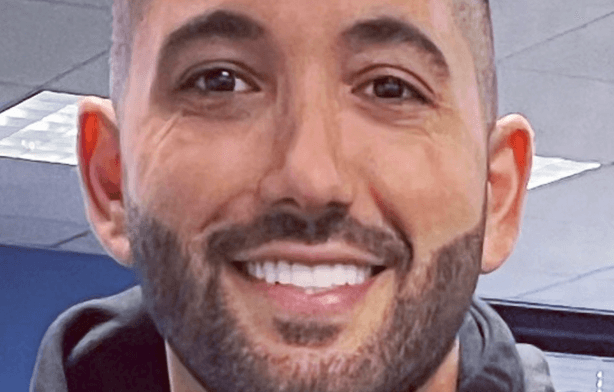Driven mainly by the pandemic and subsequent demand for detached single-family homes, the U.S. homeownership rate jumped to 65.5% in 2020, an increase of 1.3% compared with 2019, according to data from the National Association of Realtors (NAR).
However, the homeownership rate for Black Americans actually fell to 43.4% – down from 44.2% in 2010. Meanwhile, the homeownership rate for White Americans increased to 72.1%.
Not only do Black Americans have significantly lower homeownership rates, compared with White Americans, NAR’s research shows that Black Americans are nearly twice as likely to be rejected for a mortgage.
The challenge is ongoing – but the big question is, what can mortgage lenders do to increase their outreach to potential Black homeowners and deliver products that will help them reach their goal of homeownership? To help answer this complicated, multi-pronged question, MortgageOrb recently interviewed Tai Christensen, diversity, equity and inclusion officer and the director of government affairs for CBC Mortgage Agency, a national down payment assistance provider, and David Abelyen, founder and CEO of Cake Mortgage, a consumer-direct home lender based in Chatsworth, Calif.
Q: Are lenders doing a good job working with minority borrowers? Why or why not?
Christensen: Based on the wide gap in homeownership between White households and communities of color, the industry could do a better job. Minority homeownership numbers, and specifically Black homeownership numbers, are not improving—they’re actually decreasing. That’s in spite of all the programs and product enhancements and opportunities that have been provided to the minority community.
Abelyen: The reality is that minority borrowers are more likely to have credit profiles that are less than ideal, and the lender is ultimately responsible for whether the borrower can pay, so many figure it’s not worth it. It hurts borrowers who want to refinance as well. There are many minority homeowners who have equity built up, and would love to pay down their debt, but they can’t refinance because their debt is too high. It’s just the way the system is set up. It may not be purposefully unfair to minority communities, but that’s basically the effect.
Q: What are some of the challenges minority homebuyers face?
Christensen: Many in the minority community are being priced out of their communities. Rising home prices are just one factor, but disparities in income and household wealth between minority borrowers and White borrowers are also having a huge impact. According to federal statistics, the median income for Black households in 2019 was roughly 60% of the median income for White households, and the median net worth of Black households was less than 15% that of White families. That means many would-be homebuyers can’t ask mom or dad for financial help with their down payment.
Abelyen: Minority borrowers often pay more for mortgages, too. On average, people in the minority community are more likely to be lower credit profile borrowers. Lenders know these borrowers don’t have many options, so they increase their fees and rate. So those who are least able to afford a home are paying more on average for the opportunity. But they do it because they don’t have a choice. You have to take what they give you.
Q: How can lenders attract more minority borrowers?
Abelyen: Mortgage lenders can’t just change up their marketing and tell people they’ve committed to serving their community—it just sounds phony. Lenders need to have real conversations with people and spend time educating them about the advantages of homeownership and how it can help them create generational wealth that they can pass down to their children. Lenders also need to hire people who are naturally helpful, who are willing to invest their time and energy guiding and advising customers until they’re able to qualify.

Christensen: Offering down payment assistance (DPA) is a great way to attract and help many first-time minority buyers. More than half of the borrowers who get assistance through the Chenoa Fund are minorities. Without down payment help, most wouldn’t have the opportunity to buy. But if we want to help people become sustainable homeowners—and we should—education is key, too. Most minority homebuyers are generational renters, so they often don’t understand all the responsibilities that come with owning a home and doing everything yourself. It’s why all borrowers who receive DPA through the Chenoa Fund are provided the opportunity to take HUD approved homeowner education classes at no additional cost.
Q: How important is it for the industry to become more diverse?
Abelyen: It’s extremely important. If a lender truly wants to help people of every background buy homes, it needs to reflect that desire. But for the most part, underserved communities are not represented very well among our industry’s leadership, which is a major reason why there is a significant racial homeownership gap. Lenders should want people from different backgrounds in the C-suite. Our company is blessed to be located in Los Angeles, where it’s easier to do that, since the city is a huge melting pot.
Christensen: There’s nothing worse than saying they want to serve the minority community and then showing up with a bunch of white guys. Lenders need people on their team who look like the people they say you want to serve – and to do that, they need to go into these communities and intrigue them into a career in the mortgage industry. However, we have seen some major strides. The Mortgage Bankers Association and other large organizations have really been pushing diversity over the past couple of years, including going into historically Black colleges and universities and talking to students about the advantages of the mortgage business as a career.
Q: How can mortgage lenders better serve minority borrowers?
Abelyen: Ultimately, we’re dealing with a systemic issue. Lenders and loan officers don’t want to do anything that messes with their profits. A loan officer who spends too much time working with people who aren’t immediately going to get a mortgage is viewed as not doing their job. It boils down to incentivizing loan officers to actually help people at the very beginning of their homeownership journey, perhaps by changing pay structures and monitoring the conversations loan officers are having with customers to see if they are actually helping people or just getting them off the phone as fast as possible.
Christensen: Compensation models do need to change. I started in the trenches as a loan processor in 2002, and I know you get paid on how fast you can produce. But one cannot produce quickly with a $60,000 a year, 580 credit score borrower. When that file comes across the desk, it’s going to be a substantial amount of work, so an LO is more likely to pay attention to someone else. Until the mortgage industry changes that mindset, which is ingrained throughout the housing industry, nothing is going to change. But if we can change it, we can begin to change the generational tide.











